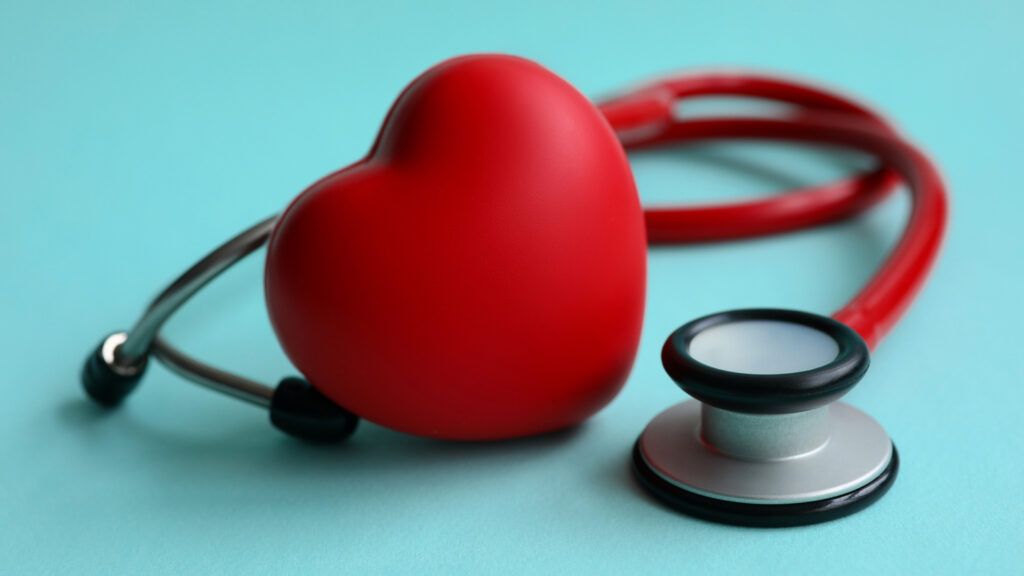Content provided by Philips Lifeline.
Every February is American Heart Month. With Valentine’s Day as its centerpiece, the month has long been associated with heart-friendliness. The American Heart Association (AHA) also dedicates each February to heart health, working to raise awareness of heart disease and ways to prevent it. The AHA’s effort is in collaboration with communities and organizations throughout the United States.
Healthcare professionals can play an important role in this effort by staying well-informed about coronary heart disease (CHD), imparting this information to their patients, and serving as models by demonstrating their own good heart health practices.
The Human Toll of Heart Disease
According to the U.S. Centers for Disease Control and Prevention (CDC), approximately 720,000 Americans experience a heart attack each year. Heart disease is the leading cause of death in both women and men; one in every four American deaths results from heart disease. CHD, the most common type, takes the lives of about 380,000 people each year and costs nearly $110 billion in medical expenses. Heart disease can also contribute to other potentially costly issues such as fall injuries and medication errors.
The human toll is readily apparent to the healthcare professionals who treat heart disease patients daily. Because these professionals routinely see the real people behind the statistics, they share a responsibility to educate both themselves and their patients on healthy behaviors that fight heart disease. This is key, as many cases of heart disease are preventable.
Understanding Heart Disease and Its Treatment
You don’t have to be a cardiology specialist to help your patients better understand heart disease and how it can be prevented. Whether during American Heart Month—or the remainder of the year—it’s important for all healthcare professionals to have a good grasp of the basic definitions and distinctions of heart disease.
According to the National Heart, Lung, and Blood Institute (NHLBI), the following are among the principal risk factors for heart disease:
- Smoking
- Family history of heart disease
- Obesity
- Poor diet
- Diabetes
- Sedentary lifestyle
- High levels of cholesterol
- High blood pressure
- Advanced age
How is Heart Disease Defined?
Even though they are often used to mean the same thing, the terms “heart disease” and “cardiovascular disease” are actually different. Cardiovascular diseases involve the heart and/or blood vessels and can occur anywhere in the circulatory system. Coronary heart disease, also called coronary artery disease or just heart disease, is one type of cardiovascular disease. CHD occurs when plaque builds up in the coronary arteries, decreasing blood flow to the heart.
Likewise, heart attacks and cardiac arrest are not the same thing. Cardiac arrest means that the heart has stopped beating for any reason, and heart attacks typically do not result in cardiac arrest. When someone has a heart attack, a vessel is blocked from supplying blood to a specific area of the heart muscle. It occurs primarily because of plaque buildup, but it can also happen when a vessel spasms tightly enough to block blood flow. A blood clot that breaks off from another part of the body and lodges in the heart can also cause a heart attack.
A heart attack’s severity is determined by how much heart tissue has been destroyed due to a blockage. Inadequate blood oxygenation can also cause a type of heart attack called demand ischemia.
What Are the Symptoms of Heart Disease?
Because heart disease can be stealthy, once a person shows symptoms, there may already be extensive damage to the cardiovascular system. This is why preventive measures such as screenings and early lifestyle changes can make such a difference.
The signs and symptoms of heart disease vary according to the specific cause(s) and can be confused with illnesses that are not as serious. For instance, a fluttery feeling in the chest accompanied by lightheadedness and shortness of breath might indicate an arrhythmia or anxiety, and acid indigestion could be mistaken for a heart attack. So, it’s crucial to know which symptoms require urgent medical attention.
When a person has any of the following symptoms, immediate medical attention is warranted:
- Chest pain (angina), especially if in the center or left side
- Bluish to gray skin discoloration (cyanosis)
- Swelling in the extremities
- Pain, weak, or numb legs or arms
- Rapid pulse
- Shortness of breath and tiring easily
- Dizziness
When symptoms of heart disease present along with a fever, dry cough, or rash, a heart infection may be the cause.
It can be difficult to spot the signs of an acute heart attack. They can range from breathtaking pain to mild or even no symptoms. Signs can be especially easy to miss in women, as their only immediate symptoms may be a vague pain or discomfort in the back. When someone complains of pain in the chest, particularly if it radiates to the arms, or if the person feels faint, nauseated, or out of breath, it’s important to immediately call emergency services.
How is Heart Disease Diagnosed?
Heart disease is diagnosed in a variety of ways, starting with establishing a patient’s medical history and then determining risk factors. When a doctor suspects heart disease, he or she may order laboratory diagnostics and refer the patient to a cardiologist. Among the available diagnostic tools for detecting CHD are:
- Chest X-ray
- Stress test
- Electrocardiogram (EKG)
- Echocardiography
- Coronary angiography
- Cardiac catheterization
How is Heart Disease Treated?
It’s important that any treatment for CHD include heart-healthy practices. General practitioners, as well as cardiology specialists, can assist patients by giving them information and referring them to dietitians, physical therapists, and other professionals.
NHLBI lists five objectives for treatment: to relieve symptoms, reduce risk factors, prevent complications, decrease the chance of developing blood clots, and clear or go around clogged arteries. Treatments can include:
- Lifestyle changes, including improved diet and increased activity
- Medications to relieve symptoms, thin blood, and reduce blood pressure
- Procedures that clear vessels (angioplasty) or bypass them by grafting tissue
- Replacement valve or heart transplant surgery
- Cardiac rehabilitation, which involves counseling, exercise, education, and training
Teaching Prevention
Prevention is the central message of American Heart Month. It’s important at any stage of life, from the early to the senior adult years. Among the most effective ways to teach good heart health practices this month or any other time of year is by living them. When healthcare professionals follow positive lifestyle practices themselves, they can serve as good role models to their patients. At the same time, they can decrease their own health risks.
The Healthcare Professional as Model
A large segment of healthcare workers are overweight. According to a study published in the American Journal of Preventive Medicine, 5.7 million health and social assistant workers are obese. Compared with 20 other industries, healthcare ranked fifth in obesity rates. Specific healthcare workers in particular, including nursing assistants and home health aides, have higher rates of obesity. Studies have demonstrated that job stressors like long work weeks and difficult work environments significantly contribute to obesity among these workers.
One of the most effective ways to learn something is by teaching it, and modeling is an excellent tool to that end. Although diagnosis or conversations about treatment options should be limited to a patient’s doctors, all healthcare professionals can benefit themselves, as well as their patients, by taking the following steps to prevent heart disease.
Stop Smoking
Smoking can increase the risk of heart disease up to four times, according to the AHA. Smoking cessation is a major factor in preventing heart disease. It’s important for any healthcare professionals who are in a position to talk about heart health with their patients to be prepared with resources on quitting smoking when asked. For instance, smoking cessation material from the American Lung Association could be offered.
Eat Heart-Healthy Foods
Adopting a healthier diet can significantly decrease the risk of heart disease. A number of resources are available to teach people about the components of a healthy diet. Easily accessible tools include recipes and menu planners to help with gradual eating habit shifts.
Get More Exercise
The CDC recommends that adults participate in 2.5 hours of moderate and 1.25 hours of vigorous activity each week, in addition to muscle strengthening activities on two or more days. For older adults, the CDC recommends increasing that activity to five hours at a moderate level and 2.5 hours at a vigorous level. Taking a walk is a very effective exercise option.
Strive for Enough Sleep
Adults in any age group should try to get eight hours of restorative sleep on a nightly basis. This can be a challenge for many, including the one in five adults who experience sleep apnea, a repeated cessation of breathing throughout the sleep cycle. Those who have apnea are often unable to get restorative sleep. They can be at a higher risk of heart disease because they are often awakened while their organs are deprived of adequate oxygen.
Employ Positive Stress-Coping Mechanisms
Everyone has stress. It is normal. But there are ways of reacting to and dealing with stress that can be unhealthy. Problematic approaches include overeating, smoking, and consuming alcohol or drugs. Positive ways of coping include relaxation, creative activities, listening to music, and physical activity. A professional counselor may help when stress interferes with a person’s health or ability to work or maintain relationships.
Take Advantage of Healthcare Screenings
Many health fairs offer free or low-cost screening services. These can give people critical information on health conditions and allow healthcare professionals to use their skills as volunteers.
Other Ways to Participate
Healthcare professionals can get involved in American Heart Month in a variety of ways. The AHA suggests additional ideas to actively raise awareness about heart health and prevention. For example, healthcare professionals may want to:
- Join an AHA walking club
- Participate in physical programs, such as Hoops for Heart and Jump Rope for Heart
- Become a You’re the Cure advocate
- Provide information through the Get with the Guidelines program
- Join any of the Go Red for Women activities
- Other ways for healthcare professionals to participate include handing out pamphlets, donating money, or hanging posters in their communities.
- It takes a combined effort to effectively prevent and fight heart disease. Whether they are modeling heart-healthy practices or volunteering their valuable services, healthcare workers can play a huge role in bringing across the important message of prevention this American Heart Month.
Just as educating seniors on preventing heart disease can help improve their quality of life, informing them about the potential benefits of medical alert devices can help seniors maintain their independence. Learn more about how to refer your senior patients for a medical alert system.





